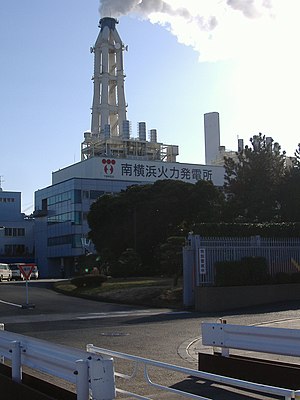 Image via Wikipedia
Image via WikipediaA March 14, 2011 press release by the Department of Foreign Affairs
The Philippine Permanent Mission to the United Nations and Other International Organizations in Vienna has reported that the International Atomic Energy Agency (IAEA) based in Vienna is monitoring the situation at the nuclear power plants and research reactors in the areas in Japan that have been affected by the 8.9 magnitude earthquake and tsunami that struck on 11 March 11, 2011.
Recent Developments
The IAEA has informed that reactor units 1, 2, and 4 at Fukushima Daini facility retain off-site power, thus ensuring continued cooling. Daini Unit 3 is in a safe, cold shutdown, according to Japanese officials.
The IAEA also confirmed that the explosion at Unit 1 reactor at the Fukushima Daiichi plant occurred outside the primary containment vessel, and not inside.
The plant operator, Tokyo Electric Power Company (TEPCO), has confirmed that the integrity of the primary containment vessel remains intact.
As a countermeasure to limit damage to the reactor core, and to avert a meltdown of the facility that could potentially result into the release of radioactive materials into the environment, sea water mixed with boron is being injected into the primary containment vessel to disrupt nuclear chain reactions and to ensure continued core cooling.
Authorities had to resort to such measure in view of the lack of power and the damage to the valves and pumps in the facility caused by the tsunami.
However, the IAEA is still verifying the status of the high pressure injection system for Unit 3 at the Fukushima Daiichi plant, which has not been restarted, thus leaving the reactor without a sufficient coolant. TEPCO has reported the matter to Japanese authorities as an emergency situation.
According to the IAEA, the Japanese Nuclear and Industrial Safety Agency (NISA) had confirmed an initial increase in levels of radioactivity around the plant yesterday, 12 March 2011, but these levels have been observed to lessen in recent hours.
Earlier, the IAEA reported that a fire had occurred at the Onagawa nuclear power plant immediately after the earthquake, but the same has been extinguished.
The IAEA is also seeking information on the status of radioactive sources in the affected areas, such as medical and industrial equipment in hospitals and industrial facilities that may have been dislocated or mishandled as a result of the earthquake and tsunami.
Emergency Measures
As of 12 March 2011, evacuations around both affected nuclear plants have begun, although full evacuation measures have not been completed.
In the 20-kilometre radius around Fukushima Daiichi, an estimated 170,000 people have been evacuated. In the 10-kilometre radius around Fukushima Daini, an estimated 30,000 people have been evacuated.
Iodine is also being distributed to the population in the areas. Said evacuation measures are part of the emergency precautionary measures being undertaken by Japanese authorities to control the impact of the incident on the population.
Apart from availing of emergency health measures being provided by the Japanese Government, Filipinos in the affected areas are advised to steer clear of other potential radioactive sources in hospitals and industrial facilities that may have been dislocated or mishandled following the calamity, as these could also lead to radioactive exposure and contamination.
In his statement on the aftermath of the calamity, IAEA Director General Yukiya Amano expressed his condolences to the Japanese people on the tragedy that affected his home country and affirmed the IAEA’s commitment to provide all available assistance within its mandate to the Japanese Government.
Possible Trans-boundary Effects of Radiological Sources
The Philippines is a party to both the 1986 Conventions on Early Notification of a Nuclear Accident (ENAC) and the 1987 Convention on Assistance in Case of a Nuclear Accident or Radiological Emergency, both of which were negotiated and adopted following the Chernobyl incident of 1986.
The ENAC website was set up pursuant to the Early Notification Convention, which mandates States Parties to provide notice regarding nuclear accidents which have the potential for international trans-boundary release that could be of radiological safety significance for another State. Thus, Japan, being also a State Party thereto, is obliged to provide regular advisories on the incident, especially once it evolves into a magnitude where it could potentially have trans-boundary implications.
Should the incident have an impact on Philippine territory, the Philippines, under the Assistance Convention, can avail of prompt assistance, not just from the IAEA but also from other States Parties, to minimize the consequences of the nuclear accident or radiological emergency and to protect life, property and the environment from the effects of radioactive releases.
The relevant agencies can, for instance, avail of technical assistance to avert or curb the impact of radioactive material on the environment, or issue health and safety warnings, depending on the scale of the trans-boundary effect.






No comments:
Post a Comment